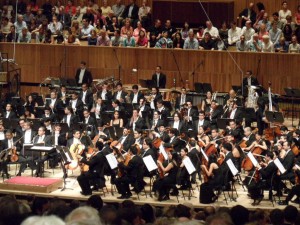“The U.S. President was on the phone with the President of China when a video from the International Space Station came in from the NASA feed to the Emergency Operations Center. A huge burnt-orange cloud was covering the entire southern Pacific, extending all the way up to Hawaii and down to New Zealand. This was no ordinary nuclear explosion.”
The recent deadly explosion in Beirut, and the science fiction thriller, Atmosphere, book 3 of the Jason Parker Trilogy, both involve a toxic, brownish-orange gas, nitrogen dioxide. Of course, one involvement is fictional, and the other, sadly, is not.
From the first chapter of Atmosphere, we find a description of the effects of a gamma ray burst hitting the Earth. “Rampaging winds began spreading toxic nitrogen dioxide clouds around the planet, and within days, the earth was fully affected.”
Considering the violence with which nitrogen dioxide is associated, the way it is created is relatively simple. Some chemists will no doubt claim that the following discussion is too simplistic, but I’ll let them fill in the blanks, if they so choose. As advertised, this is just the basics.
Given enough energy, and localized temperatures on the order of 3000°C, nitrogen molecules (two atoms of nitrogen, N2) combine with oxygen molecules (two atoms of oxygen, O2) to form a chemically unstable gas, nitric oxide, NO.
In chemical terms, N2 + O2 → 2NO
If the searing NO gas is cooled rapidly in the presence of oxygen molecules, the toxic, brownish-orange gas, nitrogen dioxide, is formed.
2NO + O2 → 2NO2. (This is really nasty stuff!)
It’s been known since at least 1911 that the temperature of an electrical arc (6000° – 8000°C) is enough to cause N2 and O2 to form NO. If the hot gaseous NO is then rapidly cooled, NO2 results.
In the science fiction novel, NO2 was created high in the atmosphere by a cosmic burst of high energy gamma rays (GRB) colliding with nitrogen molecules in the presence of oxygen. Lightning also creates nitrogen dioxide, although in relatively small quantities. But if you increase the energy and the quantity of nitrogen and oxygen, “a huge burnt-orange cloud” would be formed.
According to current estimates, that is exactly what happened in Beirut.
Apparently, an industrial fire caused the thermal decomposition of large quantities of ammonium nitrate, which energetically broke down to form massive quantities of nitrogen gas, oxygen and water.
2NH4NO3 → 2N2 + 4H2O + O2.
The resulting high temperature N2 and O2 instantly combined to form the toxic burnt orange cloud of nitrogen dioxide, as seen in the above photo.
The exact mechanism of NO2 formation likely differs among the progenitor sources (GRB, lightning, explosion), but the basics should be the same.
What happened to the poisonous cloud of NO2 after it formed? Unlike what would happen in the upper atmosphere during a GRB, near the surface there is enough moisture for the NO2 to quickly combine with water to form nitric acid.
3 NO2 + H2O → 2 HNO3 + NO
Nitric acid rain would not be pleasant, but would not be as bad as nitrogen dioxide.
So, imagine if you will, a cosmic event (a GRB) far more violent than any man-made explosion. Imagine the entire atmosphere turning into a cloud like that in the photo above. Arguably, that is what would happen after a devastating GRB from within our galaxy.
Actually, that toxic nitrogen dioxide cloud would be the least of the planet’s troubles. It would be a very bad day on Earth.
The good news is that such an event would be very unlikely.
But then again, this is 2020.




